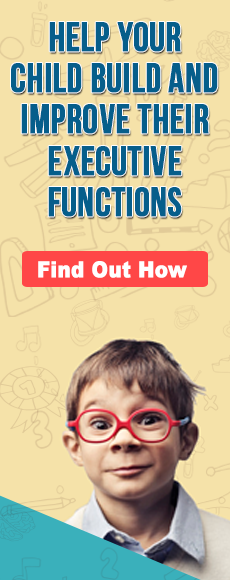
The latest medical and educational research shows that from infancy to old-age, play teaches valuable thinking skills while extending, expanding, and developing the brain. This includes digital play like surfing the Internet, using software and apps, or playing video games.
Playing selected video games in the proper amounts is actually good for your brain! Emerging research in the area of neuroscience demonstrates that all sorts of play — digital play especially — can have long-lasting, positive effects on the brain.
For example:
- Playing problem-solving video games increases activity in the prefrontal cortex of the brain, leading to improved thinking skills and analytic abilities.
- Playing working memory-based games results in structural brain changes that improve memory over time.
- Playing puzzle games like Tetris can thicken the cortex of the brain.
- Video games have been shown to improve visual attention.
- Games with significant scientific, mathematical, and literacy content have been successful in teaching specific academic material to kids.
- Digital media and video games can improve kids’ ability to pay attention and focus on tasks.
Play = Learning
 Children learn from their play. From playing their first game of peek-a-boo with their parents to learning the rules of a simple game like tic-tac-toe, play provides children with opportunities for exploring and testing their thoughts about the world. Play helps to teach about relationships, cooperation, and problem-solving. Play allows them to imitate adults, care for others, and teach and share what they have learned. Play facilitates learning how to handle disappointments and successes, develop imagination and creativity, and to practice planning, prioritization, and thinking about the future.
Children learn from their play. From playing their first game of peek-a-boo with their parents to learning the rules of a simple game like tic-tac-toe, play provides children with opportunities for exploring and testing their thoughts about the world. Play helps to teach about relationships, cooperation, and problem-solving. Play allows them to imitate adults, care for others, and teach and share what they have learned. Play facilitates learning how to handle disappointments and successes, develop imagination and creativity, and to practice planning, prioritization, and thinking about the future.
Kids play because playing is fun, but research has shown that play also provides children with opportunities to practice important skills that they will need as older children and adults such as:
- A chance to take on different adult roles in creative activities, such as playing house or school.
- An occasion to learn skills for defending or feeding oneself and for establishing oneself in a hierarchy as seen in the animal kingdom.
- In many societies, early play remains an opportunity to apprentice and practice the skills necessary for one’s future roles, whether that be as a caretaker of a household, or as a farmer, hunter, or builder.
Play in the digital age continues to serve as preparation for children’s future roles in adulthood. As demands in the work setting become more contingent upon electronic and computer-based skills, children who have strengths in these areas are more likely to become successful and acclimate to the demands of the digital work world.
Digital Play

Digital play is broadly defined as a voluntary, pleasurable, energizing activity that involves the use of digital media such as video games, websites, and apps, as well as technologies like hand-held cell phones, iPads, and iPods. Digital play also includes the use of creative technologies like digital cameras, writing tools, publishing software, and photo editing applications.
Recent research shows that digital play helps in the following ways:
- Digital play can be enlightening and can create new connections in our brains.
- It can help to develop an expertise in the use of digital technologies that may be helpful for future jobs, as well as for communicating with one’s peers.
- It can also be an opportunity to use thinking skills that may later be applied to other real-world situations.
Digital play is simply viewed as another variant of children’s play. Rather than criticizing digital play because it is different from traditional forms of play, it is better to understand why it is so appealing to children (and adults) and then integrate it into their education.
The Power of Games

The neuroscience of play helps us to understand how digital play leads to learning. But why are video games and other digital technologies such powerful learning tools? In part, it’s because the level of focused attention that children practice during video game play facilitates increased amounts of practice and repetition. As in the classroom, where a teacher who is engaging, interesting, and funny is simply able to teach more, the same holds true for technologies that command the attention and focus of students. Video games also have attributes that promote enhanced engagement in both directed and incidental learning.
Current research shows that these attributes can include:
- The chance to learn through guided discovery.
- The increasing levels of challenge that match a child’s developing mastery.
- The multi-modal nature of digital technologies that use words, actions, and sounds.
- The ability to customize learning experiences.
- The opportunity to develop content.
- The clarity and speed of immediate feedback.
- The trial-and-error methods where making mistakes is an accepted part of the process, just as hypothesis-testing and rethinking are expected components of game play.
- The lack of criticism by peers or authority figures.
Simply put, by starting with an engaging and stimulating learning activity that provides individualized feedback, children are more likely to practice a skill and continue learning in the face of frustration and difficulty.
Strategic Teaching with Video Games
 Strategic teaching principles are well-researched, scientific approaches for the instruction of students who struggle in traditional classrooms. These principles also enhance learning for typical students but are particularly suitable for those who struggle with organization, memory, and transferring what they learn from one context to another. Applying these principles to digital media transforms them into powerful real-world teaching tools.
Strategic teaching principles are well-researched, scientific approaches for the instruction of students who struggle in traditional classrooms. These principles also enhance learning for typical students but are particularly suitable for those who struggle with organization, memory, and transferring what they learn from one context to another. Applying these principles to digital media transforms them into powerful real-world teaching tools.
Scientific data supports the following basic strategic thinking principles:
- Make learning goals explicit. Students need to be informed about what they are learning and why it is important.
- Develop a partnership with the child. Ensure that the child shares the same goals as the teacher with regard to learning the material.
- Practice and model the skills in an interesting and reinforcing manner. Using an engaging format, such as video games and other electronic gadgets, provides motivation to learn and to practice skills.
- Customize and individualize the learning experience. Build upon what the child already knows and provide her with information that will be helpful for her particular needs.
- Preview strategies. Identify the major concepts that will be taught. This step helps a child understand what to attend to, and what to absorb with regard to the materials that are being presented.
- Look for teachable moments. Find experiences and materials that provide an opportunity to teach a specific skill.
- Metacognitive strategies. Encourage thinking about one’s thinking; help the student to look back and consider what she has learned.
- Generalization and transfer of knowledge. This step may be the most important, since it ensures that a child is able to take what she has learned in one setting and apply it to another.
The LW4K Model: Detect, Connect, Reflect
 At LearningWorks for Kids, we use video games and other digital technologies as teaching tools that promote both direct and indirect learning. Direct learning may occur from learning the content of video games and from enhancing skills, such as memory, processing speed, and attention, that are directly involved in gameplay. Indirect learning comes from the process of gameplay itself and generally requires an external lesson or an individual beyond the game itself to promote real-world learning.
At LearningWorks for Kids, we use video games and other digital technologies as teaching tools that promote both direct and indirect learning. Direct learning may occur from learning the content of video games and from enhancing skills, such as memory, processing speed, and attention, that are directly involved in gameplay. Indirect learning comes from the process of gameplay itself and generally requires an external lesson or an individual beyond the game itself to promote real-world learning.
Many authors and researchers including James Paul Gee, Mark Prensky, Jane McGonical, and Henry Jenkins assert that video games alone can teach problem solving and critical thinking skills. At LearningWorks for Kids we have a more cautious outlook. While clearly, players use an array of skills when playing video games, we question whether the thinking and problem solving skills used in game play are routinely transferred to real world activities. This is a fundamental concern for alternative learners who by definition, struggle in transferring knowledge from one setting to another.
Our core approach to using video games as teaching tools relies on strategic teaching principles and our approach of “Detect, Reflect, and Connect.” Applying strategic teaching skills to videos games requires players to:
- Detect or identify when and where they are using thinking skills in video game play.
- Reflect or consider how the thinking skills used during gameplay helps them to achieve their goals.
- Connect or apply game-based thinking skills to real-world activities.
The purpose of the Detect, Reflect, and Connect steps is to mold the child into an active learner who becomes aware of, engaged in, and contemplative of what she is learning. These steps can enhance motivation and concentration. They also assist in extending learning beyond a particular game or technology and connecting it to the real world.




